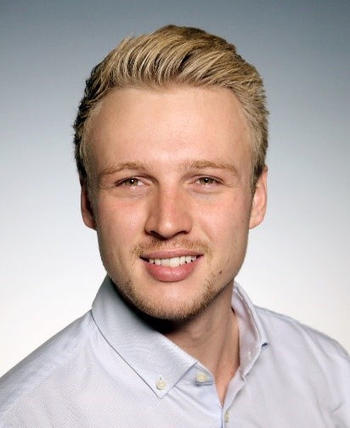Pharmacist Felix Leon Müller

Institute of Pharmacy
Clinical Pharmacy & Biochemistry
Freie Universität Berlin
Room 236
12169 Berlin
Curriculum Vitae
| since 05/2021 |
PhD student at the Dept. of Clinical Pharmacy and Biochemistry, supervised by Prof. Dr. C. Kloft |
| 12/2020-04/2021 |
Pharmacist at Linden Apotheke im Lindencenter Berlin |
| 12/2020 |
Registration as a Pharmacist |
| 05/2020-10/2020 |
Pharmacist in pre-registration year, Prenz’l Apotheke in Berlin |
| 11/2019-04/2020 |
Diploma student at the Institute of Biopharmacy and Pharmaceutical Technology at the University of Greifswald with a 6-month research stay at the University of Texas at Austin, College of Pharmacy |
| 09/2016 |
Internship at Linden Apotheke im Lindencenter Berlin |
| 02/2016 |
Internship at the hospital pharmacy of the Charité Berlin |
| 10/2015-10/2019 |
Studies of Pharmacy, Universität Greifswald |
| 06/2014 |
A-Levels (Abitur), Askanisches Gymnasium Berlin-Tempelhof |
To ensure the best possible therapy outcome for a patient, it is essential that the optimal drug concentration is achieved and maintained at the target site. When administering standard, hence often uniform drug doses, pharmacokinetic and pharmacodynamic profiles can largely vary due to individual differences between patients. This can lead to a lack of effect in some patients or to adverse drug reactions in others.
Particularly for the therapy of bacterial infections with antibiotics, with regard to the increasingly problematic resistance situation, it is therefore important to achieve the optimal drug concentration time profiles at the target site. The site of action of many antibiotics is the interstitial fluid, e.g. in subcutaneous fat or muscle tissue, in which the relevant, namely unbound drug concentration can only be measured with a few methods. Microdialysis is the most commonly used method in which microdialysis catheters can be used to measure unbound drug concentrations in a minimally invasive way in various target tissues in the context of therapeutic drug monitoring and pharmacokinetic studies. The special catheters have a selectively permeable membrane through which drugs can diffuse into a perfusate flowing slowly through the catheter. The unbound drug concentration measured in the process simultaneously represents the active drug fraction. This can be related with the efficacy of a therapy by mathematical modelling & simulations. Using these models,enables the development of dosing strategies for different patient populations depending on individual patient characteristics and the pathogen.
The focus of my research is on the further advancement of the microdialysis technology by combining in vitro microdialysis models and in silico methods. The aim is to facilitate and improve the clinical applicability of the attractive microdialysis method for obtaining highly informative pharmacokinetic data at the site of action by reducing variability and developing new calibration methods.
Overall, these investigations and data analyses should contribute to establish in vitro studies in combination with mathematical modelling in therapeutic use to ensure drug efficacy and avoid adverse drug reactions for patients by individualised dosing.